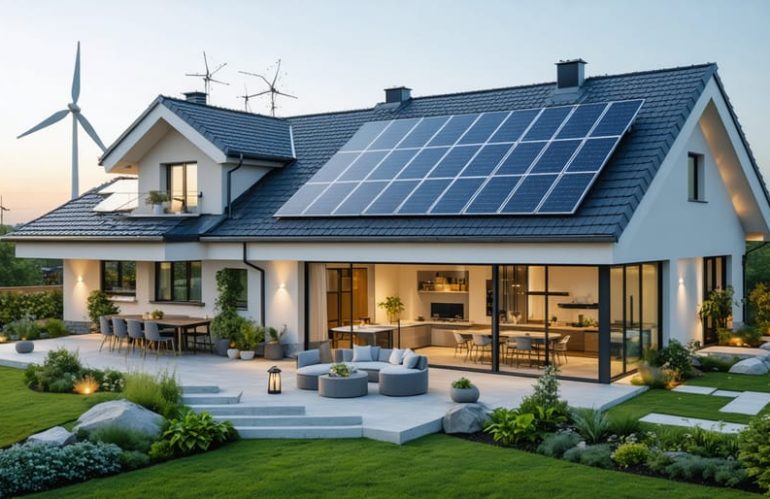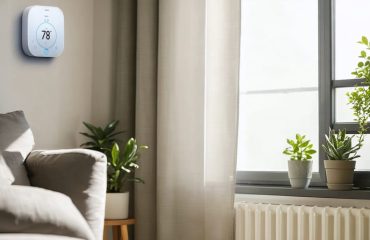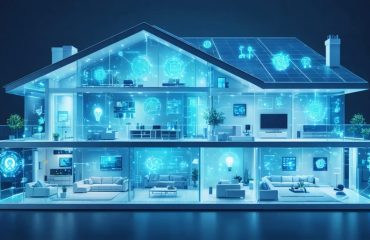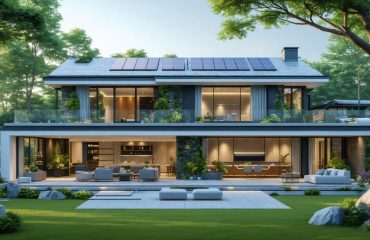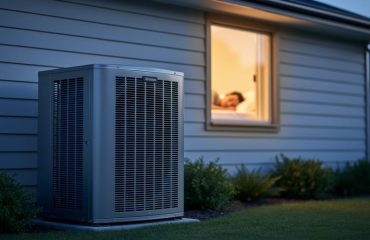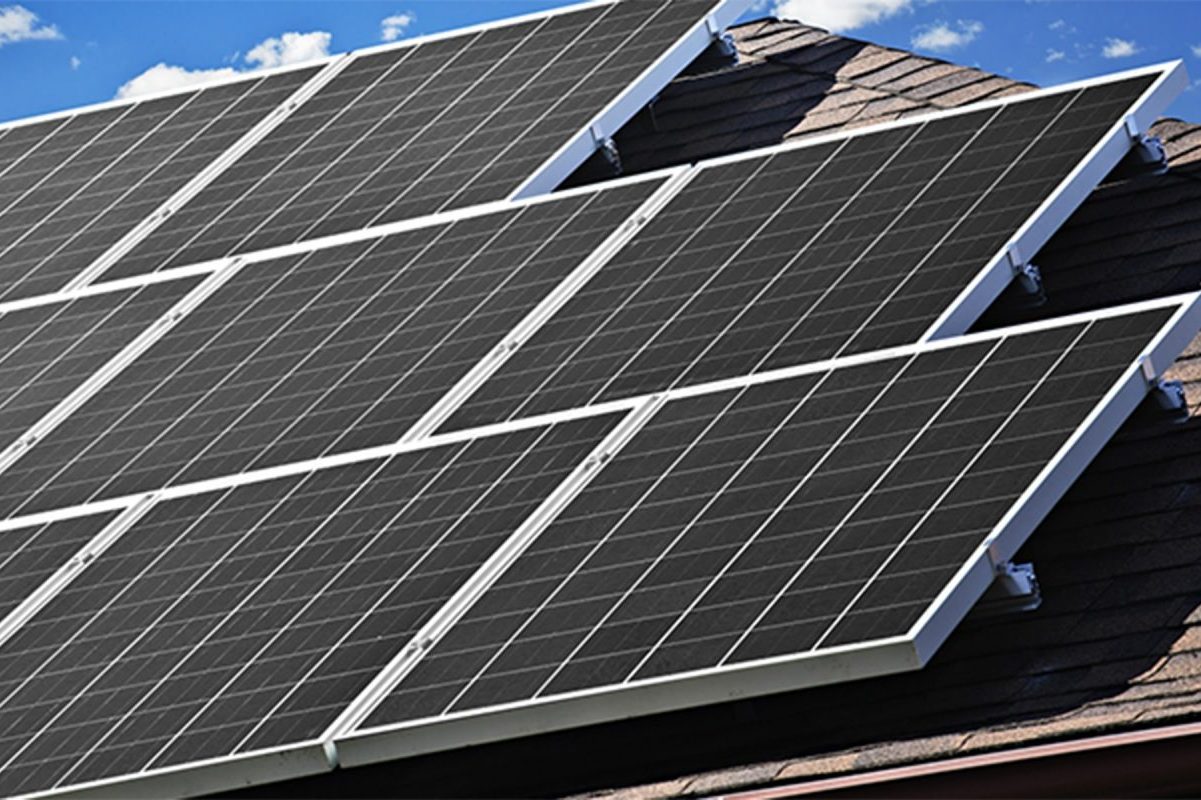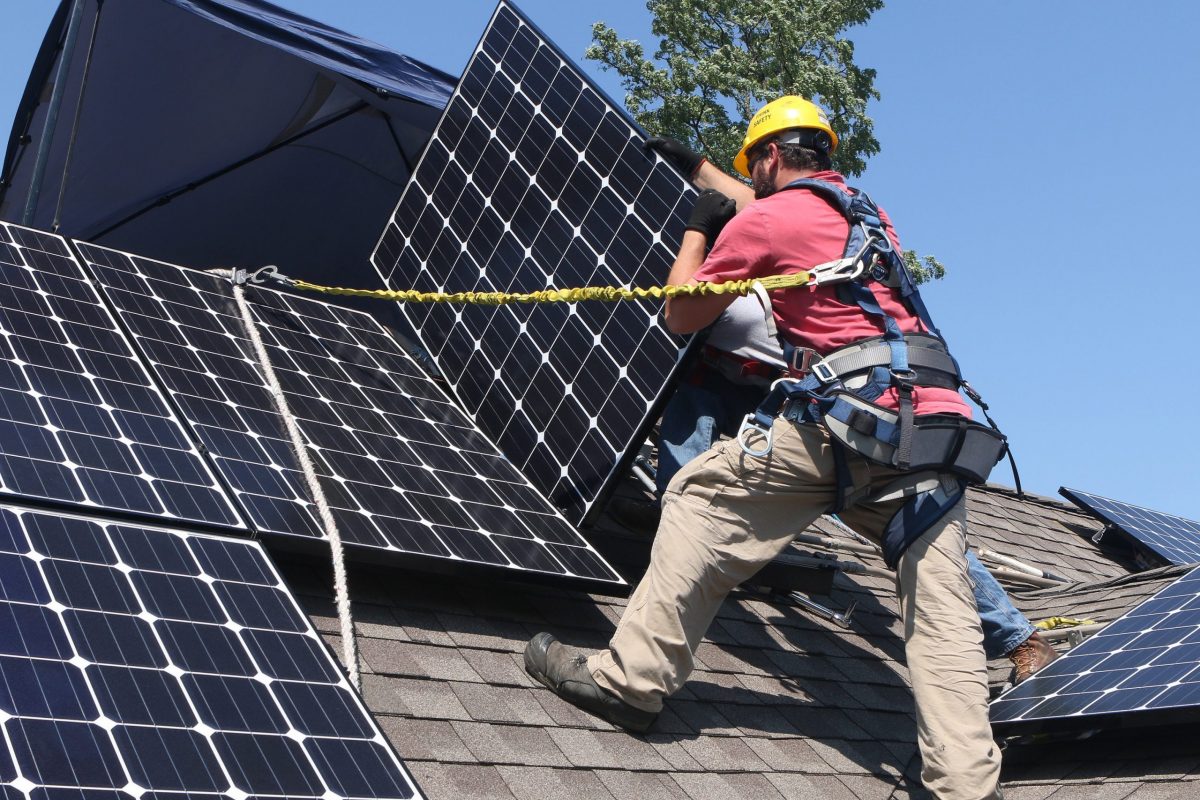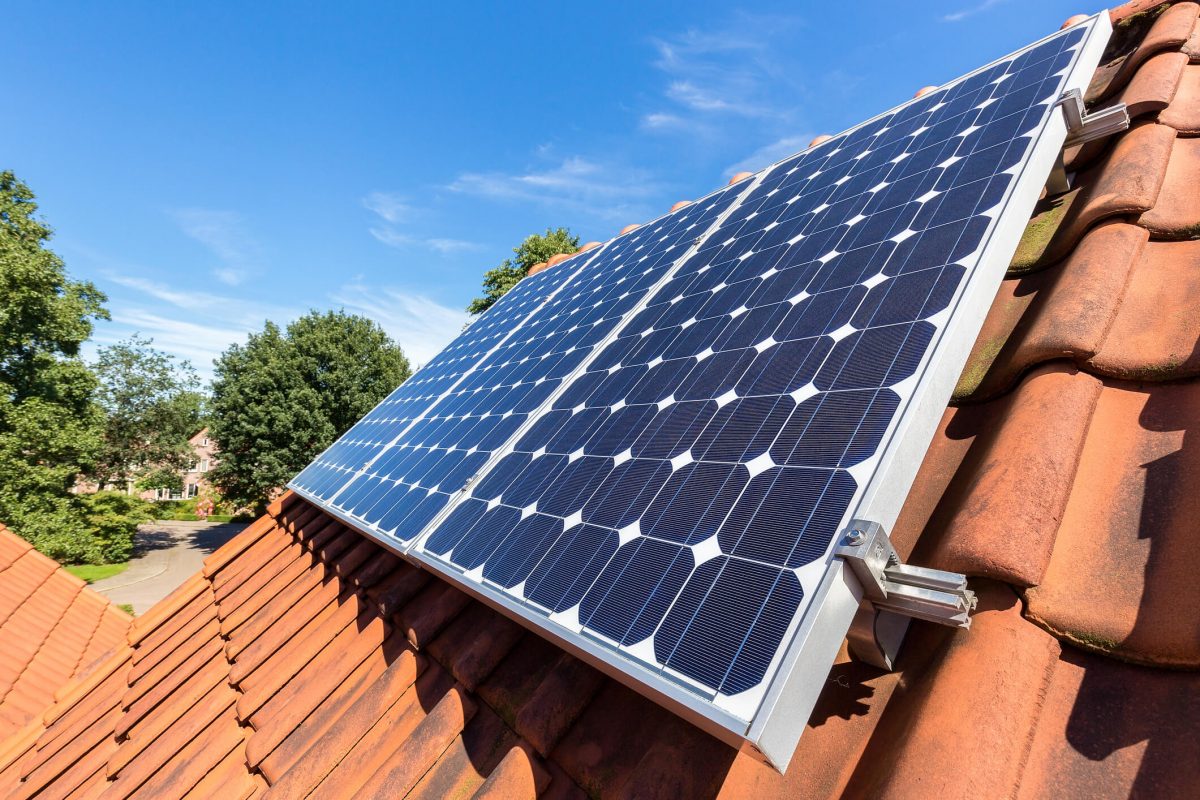Transform your home into a clean energy powerhouse with today’s accessible renewable energy solutions. From rooftop solar panels generating thousands in annual savings to smart thermostats that help you control your energy consumption, homeowners now have more options than ever to embrace sustainable living while reducing utility bills.
Modern renewable technology has evolved far beyond its experimental roots, offering proven solutions that can slash your carbon footprint while increasing your property value. Whether you’re considering solar panels that pay for themselves within 5-7 years, geothermal systems that provide consistent heating and cooling, or wind energy for properties with adequate space, there’s a renewable solution tailored to your home’s unique needs and your budget.
This guide explores the most effective renewable energy options available today, comparing initial investments, long-term savings, and installation requirements to help you make an informed decision about powering your home sustainably. We’ll cut through the technical jargon to focus on what matters most: practical solutions that work for real homeowners.
Solar Power: The Most Popular Choice for Homes
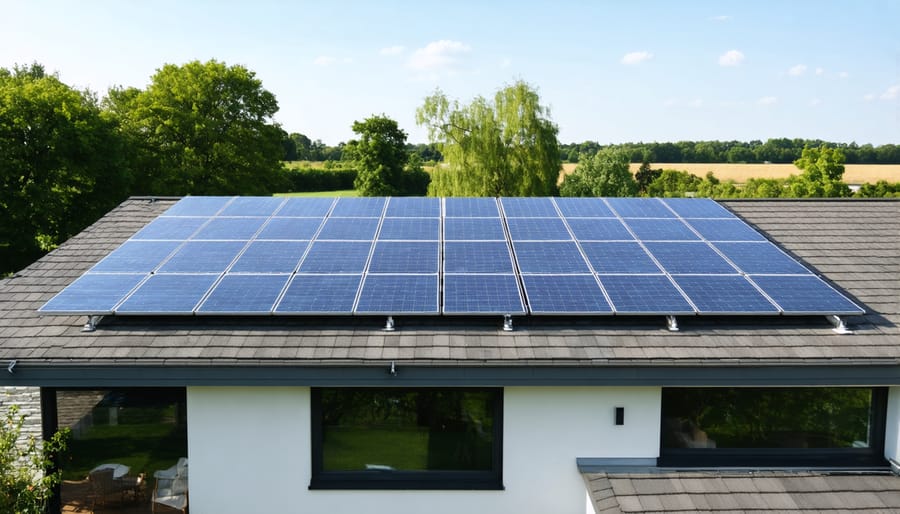
Rooftop Solar Panels: What You Need to Know
Rooftop solar panels have become increasingly popular among homeowners looking to reduce their carbon footprint and energy bills. These systems typically consist of photovoltaic panels that convert sunlight into electricity, providing clean, renewable power for your home.
Installation costs have dropped significantly in recent years, with the average system ranging from $15,000 to $25,000 before incentives. Federal tax credits, state rebates, and local incentives can reduce this investment by 30% or more, making solar more accessible than ever. Most homeowners recover their initial investment within 5-10 years through energy savings.
The efficiency of modern solar panels typically ranges from 15% to 20%, though premium panels can exceed 22%. A standard residential system can provide 250-400 watts per panel, with most homes requiring 20-24 panels for complete coverage. The exact number depends on your energy usage, roof size, and sun exposure.
Before installation, consider your roof’s condition, orientation, and shade coverage. South-facing roofs with a 30-45 degree pitch typically offer optimal sun exposure. Most solar panels come with 25-year warranties and require minimal maintenance beyond occasional cleaning and system checks.
While the upfront cost may seem substantial, solar panels offer long-term benefits including increased home value, energy independence, and significant utility savings. Many homeowners report monthly electric bill reductions of 50-90% after installation.
Solar Storage Solutions
Solar storage solutions have revolutionized how homeowners can harness and use renewable energy. Battery systems, like the popular Tesla Powerwall and LG Chem RESU, allow you to store excess solar power generated during sunny days for use when the sun isn’t shining. This technology helps you maximize energy savings by reducing reliance on grid power during peak hours.
Modern battery systems are compact, maintenance-free, and can be mounted either indoors or outdoors. Most installations include smart monitoring systems that let you track energy production, storage, and usage through your smartphone. This real-time data helps you make informed decisions about your energy consumption patterns.
The average home battery system can store between 10-15 kilowatt-hours of electricity, enough to power essential appliances during an outage or evening hours. While the upfront cost might seem significant, federal tax incentives and state rebates can substantially reduce your investment. Many homeowners find that storage systems pay for themselves through reduced utility bills and increased energy independence.
Battery storage also provides valuable backup power during grid outages, ensuring your lights stay on and your refrigerator keeps running. This peace of mind, combined with the financial benefits of storing your own clean energy, makes solar storage an increasingly popular choice for sustainable homes.
Wind Energy for Residential Properties
Small Wind Turbines: Are They Right for Your Property?
Small wind turbines can be an excellent renewable energy solution for the right property, offering the potential to generate your own clean electricity and reduce utility bills. However, before investing in a residential wind system, there are several crucial factors to consider.
First, assess your property’s wind resources. A good wind site typically needs average wind speeds of at least 10 mph, with minimal obstruction from nearby buildings, trees, or hills. Most residential wind turbines require at least one acre of land, and your property should be in an area with consistent wind patterns throughout the year.
Local zoning laws and regulations play a vital role in determining whether you can install a wind turbine. Some municipalities have height restrictions, setback requirements, or noise regulations that could affect your ability to install a system. It’s essential to check with your local planning department and homeowners association before proceeding.
The initial investment for a small wind system typically ranges from $15,000 to $50,000, depending on size and installation requirements. While this may seem substantial, federal tax incentives, state rebates, and energy savings can help offset the cost. Most systems pay for themselves within 6-15 years through reduced electricity bills.
Maintenance requirements are relatively modest but important. Regular inspections, occasional blade cleaning, and checking guy-wire tension (if applicable) are typical tasks. Modern small wind turbines are designed to last 20-25 years with proper maintenance.
For optimal performance, your turbine should be installed at least 30 feet above anything within 300 feet. This height requirement ensures the turbine can access clean, unobstructed wind flow and maximize energy production.
Consider starting with a professional wind site assessment to determine if your property is suitable. This evaluation will measure wind resources, identify optimal installation locations, and estimate potential energy production, helping you make an informed decision about whether a small wind turbine is right for your property.

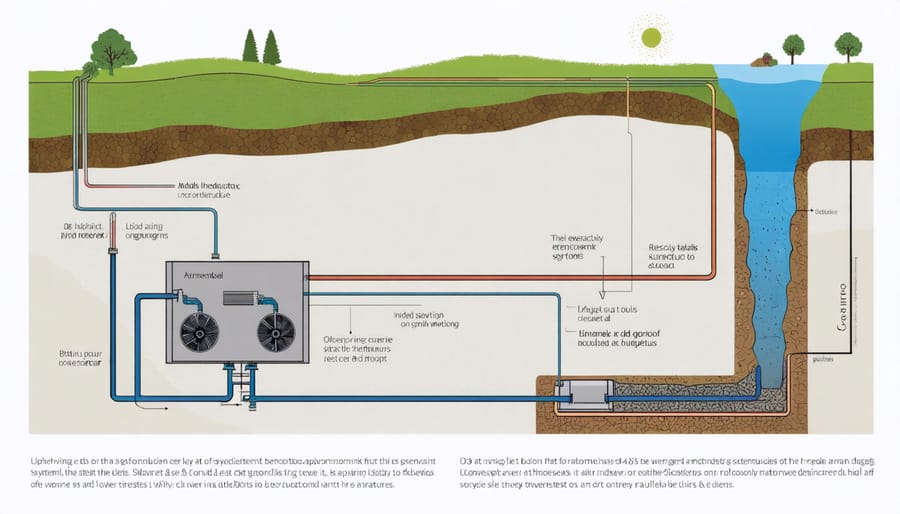
Geothermal Heat Pumps: Earth-Powered Comfort
Installation and Cost Considerations
Installing a geothermal system requires careful planning and consideration of several factors, including your property’s characteristics and local regulations. The initial setup typically involves drilling or excavation to install ground loops, which can take 3-7 days depending on your property size and system complexity. While this process may seem daunting, partnering with experienced contractors who understand energy-efficient home design can make the installation seamless.
The upfront costs for geothermal systems generally range from $20,000 to $50,000 for residential installations. While this investment might seem substantial, federal tax credits can cover up to 30% of the installation costs, and many states offer additional incentives. Local utility companies may also provide rebates or special financing options to help offset initial expenses.
Several factors influence the final cost of your geothermal system:
– Property size and layout
– Soil composition and rocky conditions
– System capacity requirements
– Type of ground loop system (horizontal or vertical)
– Local labor and material costs
– Existing ductwork condition
The good news is that geothermal systems typically pay for themselves within 5-10 years through reduced energy bills. Homeowners can expect to save 30-60% on heating costs and 20-50% on cooling expenses compared to conventional HVAC systems. Additionally, these systems require minimal maintenance, with indoor components lasting 25+ years and ground loops often carrying 50-year warranties.
To maximize your investment, consider starting with a professional energy audit to determine the optimal system size for your home. Many installers offer free consultations and can help you understand available financing options, including home equity loans and specialized green energy financing programs. Remember to obtain multiple quotes and verify that your chosen contractor is properly certified and experienced in geothermal installations.
Hybrid Systems: Combining Multiple Renewable Sources
Combining multiple renewable energy sources creates a more reliable and efficient power system for your home. This hybrid approach maximizes energy production by leveraging the strengths of different technologies while minimizing their individual limitations.
A popular hybrid combination pairs solar panels with wind turbines. While solar panels generate power during sunny days, wind turbines can continue producing electricity at night or during cloudy weather. This complementary relationship ensures more consistent energy production throughout the year.
Adding battery storage to your hybrid system allows you to store excess energy for use during peak demand or when renewable sources aren’t actively generating power. Modern smart energy management systems can automatically optimize your hybrid setup, directing power where it’s needed most and switching between sources based on availability and demand.
For homes with suitable property, incorporating geothermal systems alongside solar or wind power creates an even more robust energy solution. Geothermal provides steady baseline heating and cooling, while other renewable sources handle additional electrical needs.
The initial investment in a hybrid system may be higher than single-source solutions, but the long-term benefits often justify the cost. These benefits include:
– Greater energy independence
– Reduced utility bills
– Increased system reliability
– Better energy security during outages
– Higher potential for energy self-sufficiency
When planning a hybrid system, consider working with a renewable energy specialist who can assess your home’s specific needs and recommend the most effective combination of technologies for your situation.
As we’ve explored, renewable energy options offer homeowners powerful ways to reduce their environmental impact while securing long-term energy savings. From solar panels that can slash electricity bills to geothermal systems that provide year-round comfort, sustainable energy solutions are more accessible and affordable than ever before. Wind power and biomass systems present additional possibilities for those with suitable properties, while hybrid approaches can maximize efficiency and reliability.
Making the switch to renewable energy isn’t just about environmental stewardship – it’s a smart financial decision that can increase your property value and protect you from rising utility costs. With available tax incentives, decreasing installation costs, and improving technology, there’s never been a better time to invest in clean energy for your home.
Take the first step today by scheduling an energy audit or consulting with renewable energy professionals in your area. Whether you start with a simple solar installation or commit to a comprehensive green energy system, your choice to embrace renewable power will benefit both your household and future generations. The path to sustainable living begins with informed decisions and positive action – and the perfect time to start is now.

